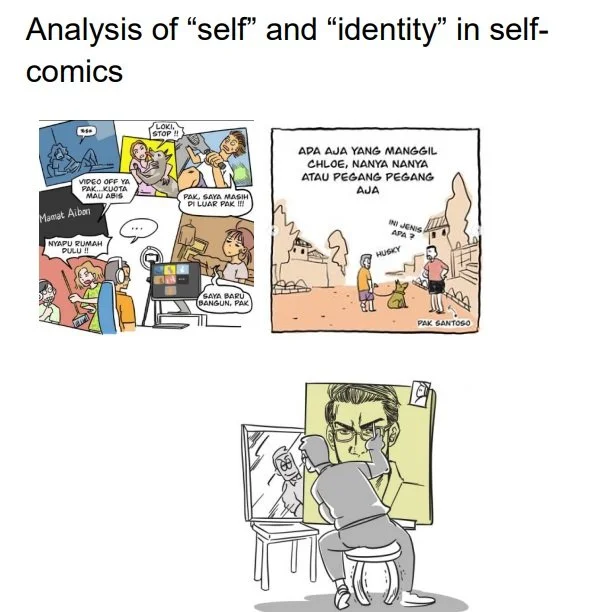Analysis of “self” and “identity” in selfcomics
Abstract
When comic artist creates a personal comic, whose identities portrayed in the comic? Himself or his reconstructed image? More so, when the comic is published in social media, many viewers presumed that the comic is a mirror of the auteur life itself. This is where the constructed identities and real identities is reconstructed: negotiated, blurred between fiction and non-fiction.As an art, comics are a nexus of contexts and content, text-subtext, and ideology-identity. The important linking nodes of all that is the auteur. As the auteur's medium of expression, comics are equally great; comics can be either biographical or autobiographical. Comics can be a fragment of realism and hyper realism, but also as self-and identities. The perspectives of self (theory) and (social) identities is a problematic negotiation between social and cultural construction and individual expression. By employing characters, plots, environments familiar to the author, artist construct narratives about themselves, about who they are, what they want to become, what they feel, what they want to say, and what left unsaid in real life. Stories are consist by an line up of self-characters with a specific role, with life goals, living values which staged inside a “what if” universe. (Holland, Lachicotte, Skinner, & Cain, 1998). This research tries to critically discusses the boundaries between them, and the artistic impact or art to the artwork. It then progresses to discuss in understanding the mechanics of performative aspect of identities to deliver a text-subtext messages to their reader in Foucaultian manner. Within the theoretical framework of self theory (Burke, 1980), and social identity theory (Turner, 1980) implemented to two (3) artwork, specifically: French comic Guy Delisle’s “Bad Parenting” series, Indonesian comic Sheila Rooswitha’s “Sheilas Playground,” and writer’s own comics “Dog-walking” series. These comics is comics about each author’s daily life, were told in a comic strip format, and published once-twice a week. They were chosen by the salience level of reality asserts by the story, and the similarity level between self-identity, or identity-constructed identity.
https://www.researchgate.net/publication/366877876_Analysis_of_self_and_identity_in_self-_comics

